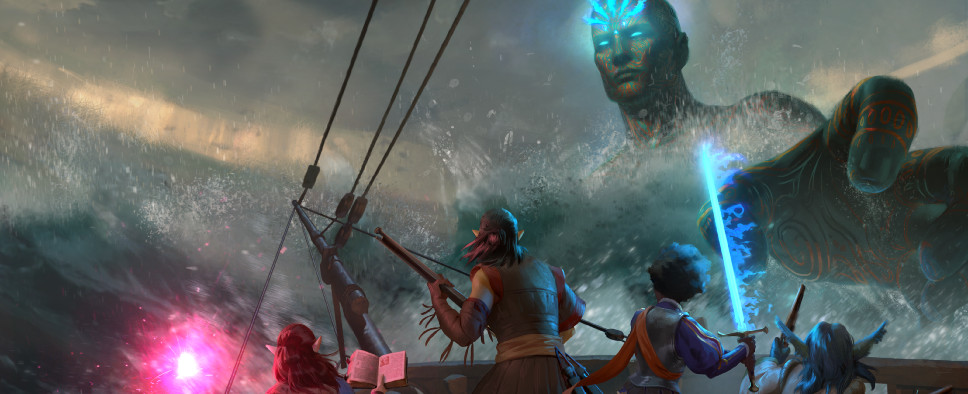Pillars of Eternity II: Deadfire Update #23: All About Naga
-
Category: News ArchiveHits: 2433

The newest Fig update for Pillars of Eternity II: Deadfire informs us that thanks to the Slacker Backer funding, the project is now close to its $4.75 million goal that will add fishing and sea monsters to the game. Apart from the funding details, this update also talks a bit about a particular creature type that will populate the Deadfire Archipelago – The Naga. There's a screenshot, a sample animation, some concept art, and even a spreadsheet, and since I'm allergic to spreadsheets, I'll just quote the more reader-friendly parts of the update:
Variants, Types & Abilities
There are three variants of naga with their own resistances and weaknesses:The variants can be further broken down into types, each with their own unique abilities:
- Naga (Poison)
- Resistances: Poison
- Weaknesses: None
- Flame Naga (Fire)
- Resistances: Dexterity Afflictions (Hobbled, Immobilize, Paralyze), Piercing Resistance
- Weaknesses: Slashing, Water
- Coral Naga (Water)
- Resistances: Dexterity Afflictions (Hobbled, Immobilize, Paralyze), Piercing Resistance
- Weaknesses: Slashing, Shock
Lore
- Warriors: The least intelligent type of naga. These are brutes focused primarily on dealing melee damage.
- Skirmishers: Also known as archers. Skirmishers are the most venomous, cunning, and deadly.
- Shamans: Spiritual and political leaders. Most intelligent and Druid/Priest casters.
Naga are a species of intelligent, reptilian wilder. They are native to many islands in the Deadfire Archipelago, and their various subspecies have adapted to a variety of conditions present there, including jungles, coral atolls, and volcanic slopes.
Social by nature, they tend to live in large groups, often under the guidance of spiritual leaders. Most are highly religious and consider themselves more sensitive to the will of the gods than kith societies, which has led to violent confrontations between the native naga and the many newcomers to Deadfire. On the other hand, they maintain neutral relationships with most Huana tribes.
Their long-established oral tradition tells of the cataclysmic devastation of the archipelago millennia ago, and of the kith misdeeds that preceded it. Many attribute naga hostilities to these tales and to the mistrust they engender.

